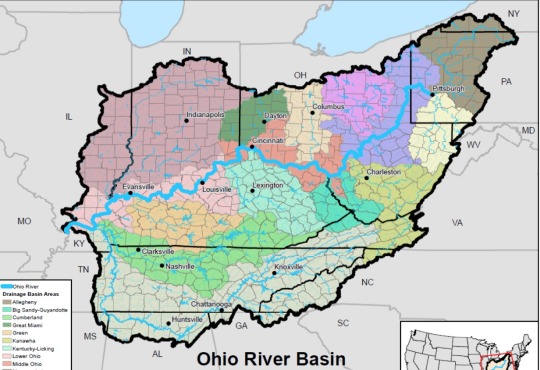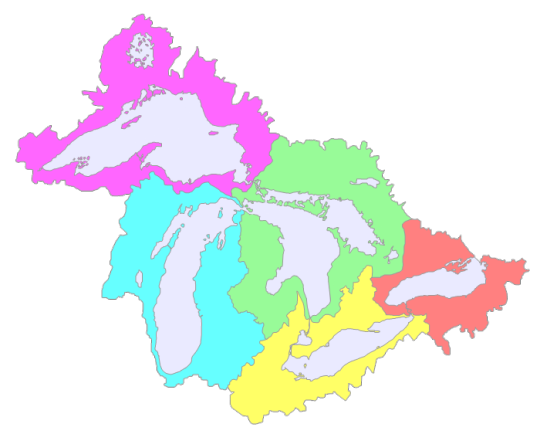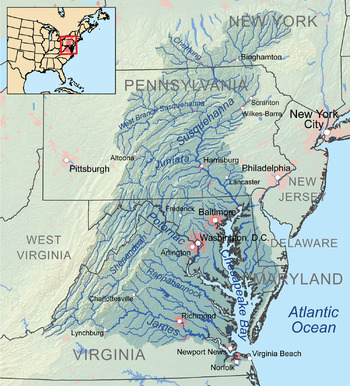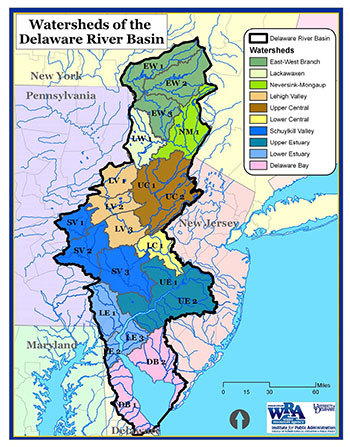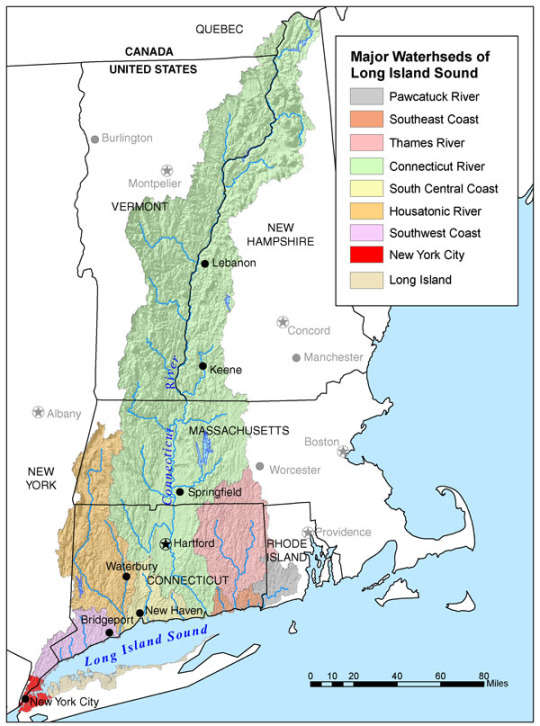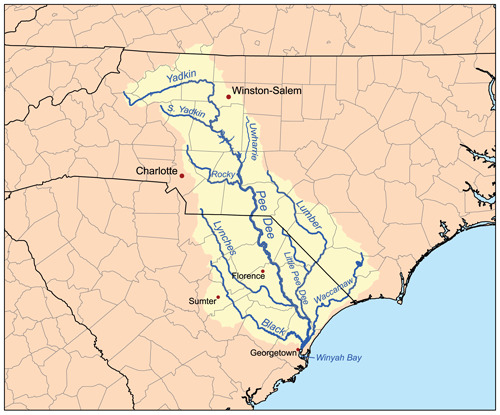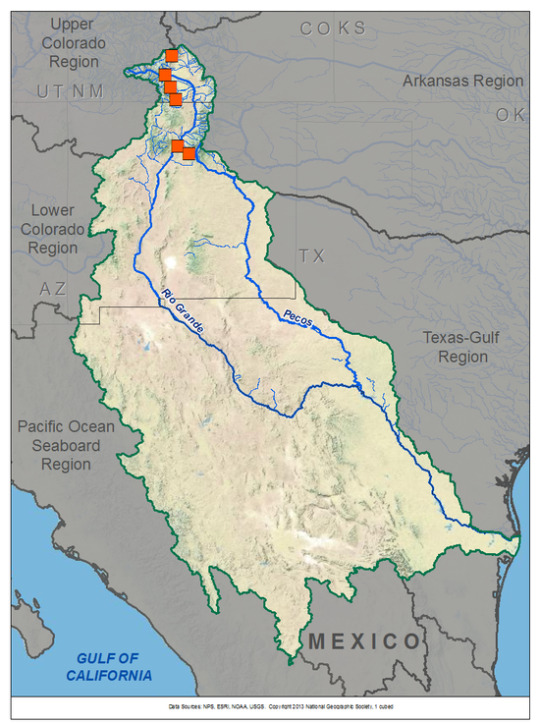#Columbia river basin
Text
The Biden administration agreed Thursday to spend more than $200 million to fully fund Native tribes’ plans to reintroduce salmon in the upper Columbia River basin — more than 80 years after construction of the Grand Coulee Dam rendered the fish extinct in parts of Washington, Idaho and British Columbia.
The unprecedented show of federal support is a course correction from the previous efforts of some federal agencies to resist tribal salmon restoration, which were documented in an August 2022 investigation by Oregon Public Broadcasting and ProPublica.
“This agreement is the start of fixing a wrong,” Greg Abrahamson, chair of the Spokane Tribe of Indians, said during the announcement of the agreement. “Grand Coulee Dam allowed the desert to bloom, and many faraway cities enjoyed the cheap electricity it produces, at my people’s expense.”
The announcement is also a recognition of the federal government’s long-standing violations of the fishing rights of sovereign tribes, some of whom have signed treaties with the U.S. government. Construction of Grand Coulee Dam destroyed the Columbia River fishing site of Kettle Falls, a regional trading hub and sacred site for many salmon-dependent tribes. It cut off hundreds of miles of river habitat for salmon, who migrate to the ocean as young fish and return to their home waters to spawn as adults. Salmon and other oceangoing fish once accounted for an estimated 60% of the historic diet for Northwest Indigenous people. After the construction of Grand Coulee and other dams in the upper Columbia basin, those fish disappeared.
After nearly 80 years without those fish, a coalition of tribes along the upper Columbia River developed in 2015 a multiphase plan to reintroduce salmon into areas where they’d been blocked.
The tribes’ long-term plan involves building hatcheries, releasing fish into waters above Grand Coulee, tracking their migration and developing plans to pass fish safely around the dams through techniques like trapping them and trucking them up or downstream. They designed the plan to ensure it does not interfere with hydropower generation at the federal government’s biggest dam on the Columbia.
27 notes
·
View notes
Text
https://ictnews.org/news/condors-are-coming-back-to-the-pacific-northwest
#condors#pacific northwest#nez perce#Columbia river basin#snake river basin#Hells Canyon#Nimiipuu#the canyon where condors nested#Vultures of the Columbia
1 note
·
View note
Text
In the 1930s, the US put lots of dams along the Columbia River to provide power and prevent flooding. As a side effect, it destroyed the salmon populations of the upper Columbia River and its tributaries, because salmon have to be able to migrate out to the ocean and back. (They live most of their lives in the ocean, but come upriver to spawn.) The local tribes have been trying to figure out a way of restoring salmon habitat ever since.
The Biden administration just committed $26 million to build infrastructure that will allow fish to bypass dams, and also help with the tribal studies on the best way to reintroduce salmon to the area. And the programs they've agreed to fund were developed by the tribes, so native voices will have a strong say.
4K notes
·
View notes
Text

Title text: Washington state is seeing great success with reintroducing the Columbia River Basin subpopulation. We cannot allow them to further widen the interstate bun gap.
227 notes
·
View notes
Text
It is a rocky, stormy, and wild coast, one that everywhere reveals nature at its most spectacular. There are the redwood groves of Northern California, the raging rivers of Southern Oregon, the Rogue Basin, and the Umpqua forest. There is the mouth of the Columbia River, with its huge waves and foaming breakers, where ocean currents and tides collide with the deadly bars. In Washington State, there are the breathtaking sea stacks of the Olympic National Park, the Hoh River, and Quinault River valleys. Also in the park are towering fir, cedar, and spruce trees draped in ghostly mosses. Then comes an inland sea, the Salish Sea, shared by Washington and British Columbia, where snow-laden mountains — the ten-thousand-foot Mt Baker and the eight-thousand-foot Mt Olympus — shelter idyllic islands whose waters are home to the last of the southern orcas.
#old growth forest#temperate rainforest#tongass national forest#redwoods#west coast#b.c.#california#oregon#alaska
328 notes
·
View notes
Text
First Nations groups on the Canadian side of the Columbia River Basin are adamant that salmon runs that have long been blocked by dams in the United States must be restored, potentially in a renewed river treaty between the two countries.
But experts say possible solutions, such as “salmon cannons” that suck fish through a pipe and shoot them out upstream and over obstacles, are all costly and potentially limited in their effectiveness.
Representatives from the Ktunaxa and Syilx Okanagan nations say they continue to bring up salmon restoration in negotiations for a modern Columbia River Treaty and will not stop until a solution can be reached within or outside a new agreement.
The U.S.-Canada treaty regulates the cross-border Columbia River to prevent flooding and generate hydro power. A key component of the 62-year-old treaty is set to expire in September 2024, lending urgency to the ongoing talks.
Continue Reading.
Tagging: @politicsofcanada
116 notes
·
View notes
Text
Angela Sondenaa was jet-boating up the Snake River through Hells Canyon. Looking at the steep cliffs and rocky crags, an idea struck her: “Man, there needs to be condors here,” she recalls thinking.
It was 2015 and Sondenaa—the Nez Perce Tribe’s Precious Lands Wildlife Area project leader—was surveying for bighorn sheep.
She’d never considered the idea of bringing condors back to the Columbia River Basin, but once it hit her, she says, “This idea would not leave me.”
Sondenaa pitched her idea to the tribe’s wildlife director, and they submitted a grant proposal to the U.S. Fish and Wildlife Service to conduct a condor viability assessment in the Snake River Basin.
Winning the grant in 2016 put the Nez Perce Tribe—or Nimíipuu—on a path that could lead to the first reintroduction of condors north of California since they disappeared from this region about 160 years ago.
If all continues to go well, the tribe will release their first group of captive-raised birds in a yet-to-be-determined location within five to seven years.
#california condor#rewilding#species reintroduction#ecological restoration#ecology#endangered species#wildlife conservation#pacific northwest
21 notes
·
View notes
Text
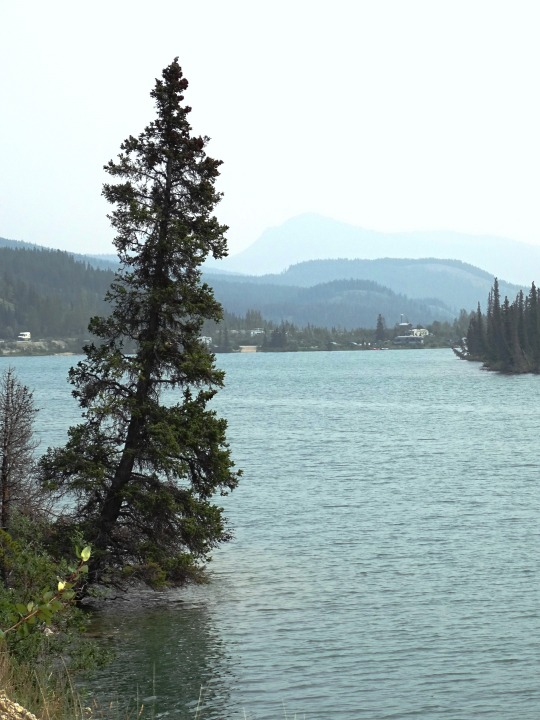
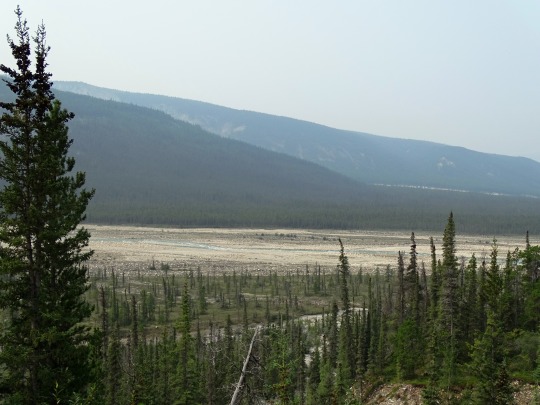
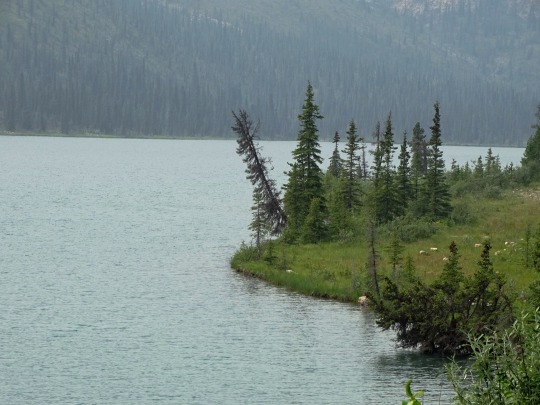
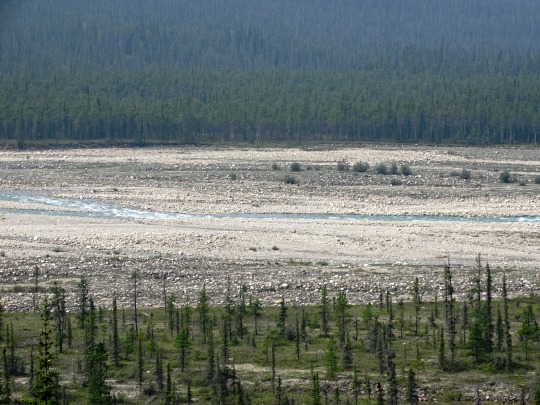
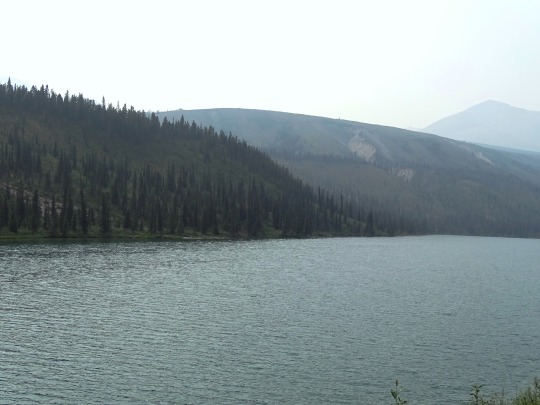
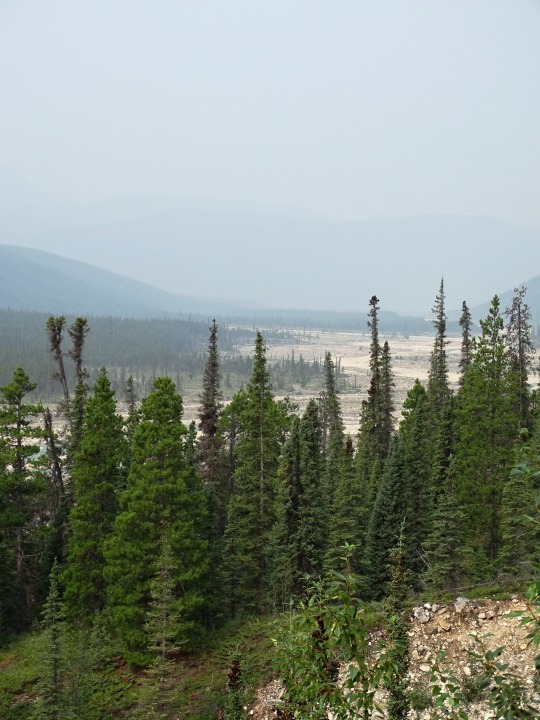
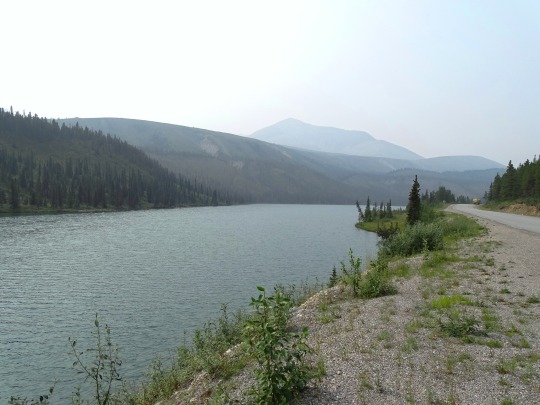
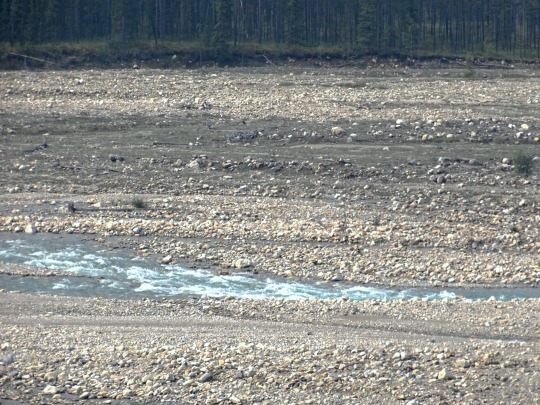
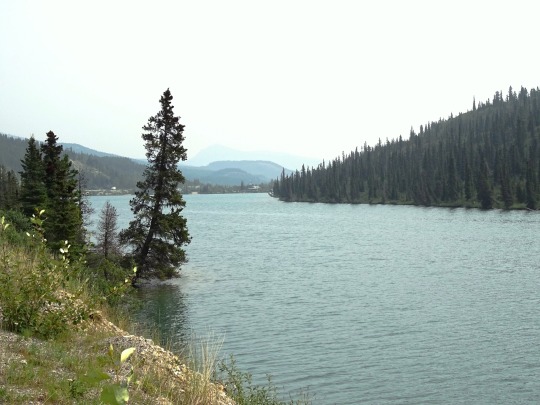
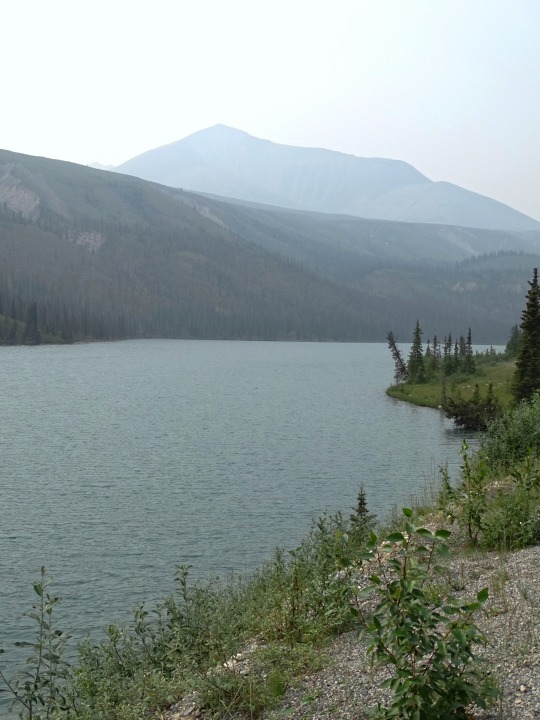
MacDonald Creek/Summit Lake
Summit Lake, elevation 710 m (2329 ft), is a lake in the Central Interior of British Columbia, Canada, located to the north of the city of Prince George. It is the namesake of the community of the same name, which lies alongside the John Hart Highway to the south of the community of McLeod Lake (Fort McLeod). It is at the head of the Crooked River, which flows north to McLeod Lake.
Summit Lake is situated at the divide between the Fraser and Peace basins and so is at the divide between the Pacific and Arctic drainages. As such, it is also the location of the prominence col for Pico de Orizaba, in relation to Denali, meaning also that it is one of the lowest locations along the Continental Divide of North America north of Mexico.
Source: Wikipedia
#MacDonald Creek#Summit Lake#BC#travel#original photography#vacation#tourist attraction#landmark#landscape#countryside#British Columbia#woods#forest#nature#flora#tree#wildfire smoke#summer 2023#Canada#boreal forest#Canadian Rockies#Rocky Mountains#Northern Rockies#Alaska Highway#rocks#lake shore
11 notes
·
View notes
Text
Adult Fieldtrip
TW Graphic description follows.
The realtors office in our resort arranged for a tour of the local Yakima Nation fish hatchery. This hatchery is one of many dedicated to restoring salmon to the Columbia River Basin.
The tour was short but very interesting. We saw them collect roe and sperm from a few river caught adult male and female Chinook.
First the fish are killed by removing a gill which causes them to bleed out. Then they are checked for tags, weighed and measured and then the sperm/roe are collected. Lastly a fish pathologist collects a kidney sample for testing. The roe are fertilized immediately but quarantined pending results of the kidney biopsy performed by the University of Washington. The carcasses are frozen for a month to kill any pathogens before being pulverized and spread in the river to return their nutrients to the ecosystem.
From the ~400 adults collected, approx 1m eggs will be fertilized and -800k fry will be tagged and released the following Spring when they will make their way to the Pacific. Fortunate fish will mature in the ocean and smell their way back to this river in 3-4 years.
This is a very professional operation and the Cle Elum hatchery is a world class research facility.






30 notes
·
View notes
Text

First Nations groups on the Canadian side of the Columbia River Basin are adamant that salmon runs that have long been blocked by dams in the United States must be restored, potentially in a renewed river treaty between the two countries.
But experts say possible solutions, such as “salmon cannons” that suck fish through a pipe and shoot them out upstream and over obstacles, are all costly and potentially limited in their effectiveness.
Representatives from the Ktunaxa and Syilx Okanagan nations say they continue to bring up salmon restoration in negotiations for a modern Columbia River Treaty and will not stop until a solution can be reached within or outside a new agreement.
The U.S.-Canada treaty regulates the cross-border Columbia River to prevent flooding and generate hydro power. A key component of the 62-year-old treaty is set to expire in September 2024, lending urgency to the ongoing talks.
“I think what we are doing in the fight to bring salmon back is vital to us moving forward,” said Lower Similkameen Indian Band Chief Keith Crow, who is a member on the Syilx Okanagan Nation’s Chiefs Executive Council and the Nation’s lead in the Columbia River Treaty talks.
“And we’re not going to back down, either,” he said.
The U.S. Bureau of Reclamation says much of the migratory salmon run in the Upper Columbia, both in Canada and the U.S., ended with the completion of the Grand Coulee Dam in Washington state in 1942.
While the Grand Coulee Dam isn’t among four dams built in accordance with the 1961 Columbia River Treaty, First Nations leaders say the talks offer a rare opportunity for them to directly engage American officials about restoring Pacific salmon to the Upper Columbia.
“The salmon hasn’t been a big piece of (the talks), and I’ve been trying to move it forward consistently,” Crow said.
The nation opened its own hatchery near Penticton, B.C., in 2014 to help bring salmon back to Okanagan waters.
The goal, Crow said, is the restoration of natural salmon runs throughout the Upper Columbia Basin.
“We’ve been supplying salmon back to the people for years from our hatchery from the work that we’ve done, but to be able to see them actually swimming freely and coming up the Columbia the way they’re meant to be, I think it’s something I’m hoping I’m going to see in my lifetime.”
Ktunaxa Nation Council Chair Kathryn Teneese said the loss of salmon to the Upper Columbia Basin fundamentally changed communities and their ways of life, since the fish was a staple to traditional diets and held significant cultural value.
“We now have generations of people that have grown up without even knowing that salmon was very much part of our staple diet,” Teneese said. “So, from that perspective, it’s changed who we are. Because one of the things that we say is that we have a word in our language for salmon, but we don’t have access to it.
“We just fill that void with the utilization of all of the other resources off the land that we’ve always used, but there’s just a piece missing.”
Crow said salmon may have comprised up to 50 per cent of traditional Syilx Okanagan diets prior to the region losing its fish runs.
In September, the U.S. pledged more than $200 million over 20 years from the Bonneville Power Administration for reintroducing salmon in the Upper Columbia River Basin.
Crow said he has spoken with British Columbia Premier David Eby about similar long-term financial commitments on the Canadian side.
“Right now, we are kind of doing the best we can with the budgets that we get every year,” Crow said. “So, a long-term commitment would be so much more beneficial. We can get so much more done, I think.”
In June, the province agreed to separate bilateral deals with the Syilx Okanagan, Ktunaxa and Secwepemc Nations so each group receives 5 per cent of the revenue B.C. receives every year from the U.S. through the Columbia River Treaty, funding known as the Canadian Entitlement.
But the challenge in bringing salmon back to the Upper Columbia Basin isn’t limited to funding, experts say.
In 2012, a group of researchers published a report on efforts to restore Atlantic Salmon and other migrating fish species to rivers on the East Coast of North America.
The report found that the effort at three major rivers did not yield “self-sustaining populations in any eastern U.S. river” despite “hundreds of millions” in investment on the construction of hatcheries and fish passages.
“It may be time to admit failure of fish passage and hatchery-based restoration programs and acknowledge that significant diadromous species restoration is not possible without dam removals,” said the report on fish that travel between salt and fresh water.
University of Victoria Biology Professor Francis Juanes was a co-author of the report, and he said that while the topic of fish passage technology among researchers is actively discussed and constantly advancing, studies have shown the only reliable way to fully restore a natural fish run may be a dam’s removal.
Juanes said that when a dam on the Elwha River was removed about a decade ago in Washington state, “you didn’t have to reintroduce (salmon).”
“They came back naturally. In a sense, that is the best way to reintroduce salmon especially to a river system.”
Results on the East Coast where fish ladders were used, particularly the Connecticut River, were not nearly as effective, Juanes said.
“It took so much effort by so many states, and you needed the hatcheries to grow these babies. So, that’s an enormous effort, and the return just wasn’t very good.”
John Waldman, biology professor at Queens College in New York, is one of the main authors of the report.
Waldman said there is rising belief among grassroots and Indigenous groups throughout North America that dam removals may be the optimal way to restore fish runs, in lieu of the poor results from alternative passages.
“I think there’s one universal theme that has emerged over the last two decades, which is that dam removal is without question the best solution to bringing these fish back again,” he said.
“Fish ladders and fish elevators provide what’s called the halfway measure.
“It looks like to the uninitiated that you have a solution and that it works, but the truth is when you look at the actual performance of many of these fish ladders and fish elevators, not that many fish pass through them.”
The biggest dam removal project in the United States began earlier this year on the Klamath River along the Oregon-California border, where four such structures will come down by next year under a budget of US$450 million.
Discussions on removing four dams on another branch of the Columbia River Basin – in the lower parts of the Snake River – have been ongoing for years, with the U.S. federal government rejecting in 2020 the idea due to possible power-grid destabilization if the hydro electricity from the dams are removed.
Last month, U.S. President Joe Biden directed federal agencies to use all available authorities and resources to restore salmon runs in the Columbia River Basin that are “healthy and abundant.”
Biden’s order, however, stopped short of calling for the removal of the dams on the Lower Snake River in Washington state.
The Upper Columbia United Tribes, consisting of five member Indigenous nations in the U.S. Pacific Northwest, said on its website on salmon restoration that while more studies are needed, there have been “encouraging advances” in fish passage technologies such as floating surface collectors and salmon cannons to get past tall dams without the structures’ removal.
But such technology, Waldman said, is unproven in being able to support a large, natural fish migration.
“I think this is a quarter-way measure, not even a halfway measure,” he said.
“You see them emerging once in a while, and somebody gets wind of it on TV, and some late night comedians make fun of fish being shot through these these cannons. But no one’s ever ramped them up to be at a level that would sustain a natural level of migratory fish.”
But Juanes said such options may be necessary if dam removals are not possible, even if they may add stress to the salmon population and make them more vulnerable to diseases.
“For one, that’s a very costly thing to do,” Juanes said of fish-passage technology. “For two, it causes stress to the animals. I can imagine that this cannon is not a happy moment for the fish, but maybe it’s better than it dying below the dam.”
Crow, for his part, said he understands “there’s no way of getting around the fact” that dams such as the Grand Coulee remain in the migration path, posing a monumental challenge to restoring salmon migration routes.
But he said the reintroduction of salmon runs to the Upper Columbia Basin is important enough to warrant effort and funding.
“There are lots of options out there, but what is going to be the most efficient and least impactful to the salmon, and they can still get back up? That’s the key,” he said.
“I’ve been taught to think seven generations down. So, I’m looking seven generations ahead of decisions that I make today: How is it going to influence or how is it going to impact my great-great-grandkids?”
3 notes
·
View notes
Text
Tribes covered in the books
Tribes covered in the books
People of the Wolf - Alaska and Canadian northwest
People of the Fire- Central Rockies & Great Plains
People of the Earth- Northern Plains & Basins
People of the River- (Mississippi Valley) Cahokia
People of the Sea- Pacific Coast & Great Basin
People of the Lakes- East-Central Woodlands & Great Lakes
People of the Lightning- Florida
People of the Silence- Southwest Anasazi
People of the Mist- Chesapeake Bay
People of the Masks- Ontario & Upstate New York
People of the Owl- Middle Archaic
People of the Raven- Pacific Northwest & British Columbia
People of the Moon- Northwest New Mexico & Southwest Colorado
People of the Nightland- Ontario, New York, & Pennsylvania
Children of the Dawnland - Northern US and Ontario (thanks Duane)
People of the Weeping Eye- Mississippi Valley & Tennessee, Moundville Mississippian
People of the Thunder- Moundville, Chicaza, Choctaw, Yuchi.
Long house series
People of the Longhouse- Iroquois (Haudenosaunee) Oneida, (New York state and Canada)
The Dawn Country- Iroquois (Haudenosaunee) Onondaga,
The BrokenLand- Iroquois (Haudenosaunee) Cayuga and Seneca nations.
People of the Black Sun- Iroquois (Haudenosaunee) Mohawk
De Soto series (there are a lot of tribes not all featured in the books, i tried to limit to those i remember in the books)
Coming of the Storm- including : the Ocale, Northern Utina, Uzita, Mocoso, Uzachile, Yustaga, Alachua culture, Apalachee Nation (florida)
Fire The Sky- Including but not limited to the Capachequi, Ichisi, Ocute, Coosa, Cofitachequi, Mobilian (Georgia,South Carolina, North Carolina, Tennessee, alabama)
A Searing Wind- Mississippian culture including not limited to Chicaza, Quizquiz, Quigate (tribe), (alabama, Mississippi)
People of the SongTrail (Northeastern coast, Vikings)
People of the Morning star Series (Cahokia) Central Mississippi valley
People of the Morning Star- Cahokia
People of the Morning Star: Sun born -Cahokia, Chichen Itza
People of the Morning Star: Moon Hunt- Cahokia, Quiz Quiz,Chikosi,Albaamaha,Moskogee
People of the Morning Star: Star Path- Cahokia, Quiz Quiz, Albaamaha, Haudensaunee,
People of the Morning Star: Lightning Shell - Cahokia
People of the Canyons- Fremont
5 notes
·
View notes
Video
Ukiah, Columbia River Basin - standing in Oregon, with Washington across the river. April, 2018
Very windy, as you might imagine.
2 notes
·
View notes
Note
Wtf why do you love salmon so much
well first of all they’re fuckin uuuuh tasty 😼 and also? I think they’re a cool fish.
second! they’re actually endangered in my state due to the construction of dams in certain areas. I’m at work right now but I’ll include a couple links!
http://www.sbtribes.com/saveidahosalmon
https://time.com/6105484/pacific-salmon-endangered-washington/?amp=true
https://www.idahoconservation.org/our-work/salmon-and-steelhead
https://earthjustice.org/features/long-winding-swim-salmon-snake-river-dams
https://amp.idahostatesman.com/opinion/readers-opinion/article262483132.html
https://species.idaho.gov/planning/columbia-basin-collaborative/
BUT actually? I’m just a wild fish enthusiast. thank you
2 notes
·
View notes
Text
Climate of Oregon

See Weather Forecast for Oregon today: https://weatherusa.app/oregon
See more: https://edition.cnn.com/2024/05/08/weather/tornadoes-michigan-tuesday-storms-wednesday/index.html
Oregon's climate varies considerably due to its diverse geography, but it's generally characterized by mild, wet winters and warm, dry summers. The state is influenced by several factors including its proximity to the Pacific Ocean, the Cascade Range, and the Columbia River Gorge. Here's a breakdown:
Western Oregon:
Winter: Mild and wet, with temperatures averaging in the 40s to 50s Fahrenheit (4-10°C). Rain is frequent, especially from November to March.
Summer: Warm and dry, with temperatures typically in the 70s to 80s Fahrenheit (21-32°C). Some areas experience occasional fog in summer.
Eastern Oregon:
Winter: Colder than the western part of the state, with temperatures dropping below freezing. Snow is common in the mountains and higher elevations.
Summer: Hotter and drier than the western part, with temperatures often reaching the 90s Fahrenheit (32-37°C) and occasionally higher. It's also less cloudy and receives less precipitation.
Southern Oregon:
Winter: Generally milder compared to eastern Oregon, but cooler than the western region. Snow can occur in higher elevations.
Summer: Warm to hot, with temperatures ranging from the 80s to 90s Fahrenheit (27-37°C). It can get quite dry, especially in areas further from the coast.
Coastal Areas:
Winter: Mild and wet, with temperatures similar to western Oregon. Storms from the Pacific Ocean can bring heavy rainfall.
Summer: Cooler compared to inland areas, with temperatures often in the 60s to 70s Fahrenheit (15-26°C). Fog is common, particularly in the mornings.
See more: https://weatherusa.app/zip-code/weather-97308
https://weatherusa.app/zip-code/weather-97296
https://weatherusa.app/zip-code/weather-97281
The Cascade Range acts as a barrier, creating a rain shadow effect, which means that the western slopes receive more precipitation than the eastern slopes. Overall, Oregon's climate is conducive to lush forests in the west and semi-arid conditions in the east. However, microclimates can vary significantly based on factors such as elevation, proximity to water bodies, and local geography.
That's a comprehensive overview of the varied climates across Oregon!
Coastal Area:
Equable, mild, marine conditions.
Moderate temperatures with July averaging in the upper 50s °F (about 14 °C) and January in the low 40s °F (about 5 °C).
Relatively dry summers but with cloudy and wet seasons.
Annual precipitation ranging from 60 to 120 inches (1,500 to 3,000 mm) or more.
Lowlands (Willamette, Umpqua, and middle Rogue rivers):
Warmer summers and slightly cooler winters compared to the coast.
July temperatures average about 70 °F (21 °C) with 65 to 70 percent of possible sunshine; January averages about 40 °F (4 °C).
Rainy season from October through April with precipitation averaging 35 to 40 inches (900 to 1,000 mm), except in the middle Rogue valley, where it's 20 to 25 inches (500 to 650 mm).
Cascade Range:
Copious winter precipitation with significant snowfall.
Short, dry, sunny summers.
January temperatures below freezing above 3,000 feet (900 meters).
Snowfall from October to April with patches persisting until July.
July average temperatures between 50 and 60 °F (10 and 15 °C).
North-Central Oregon Plateau:
10 to 20 inches (250 to 500 mm) of annual precipitation, mainly in winter.
Sunny summers with July temperatures averaging in the low 70s °F (about 23 °C).
Brisk winters with January temperatures averaging in the low 30s °F (about 1 °C).
Blue-Wallowa Mountains:
Climates vary by location.
Intermontane basins and valleys similar to the north-central plateau but with colder winters.
Higher elevations receive heavy precipitation, much of it as snow during winter.
These diverse climate patterns in Oregon are influenced by factors such as proximity to the ocean, prevailing wind and storm paths, and topography and elevation, as you mentioned.
See more: https://weatherusa.app/zip-code/weather-97259
https://weatherusa.app/zip-code/weather-97258
https://weatherusa.app/zip-code/weather-97236
https://weatherusa.app/zip-code/weather-97231
Oregon's diverse forest landscapes and varied animal life contribute to its rich biodiversity.
Forest Cover:
Eastern Two-Thirds of the State: Dominated by ponderosa pine, large sagebrush, and western juniper, along with various annual grasses and wildflowers.
Blue-Wallowa Mountains and Eastern Slopes of the Cascades: Abundant stands of ponderosa pine along with bitterbrush, green manzanita, and herbaceous plants.
Western Slopes of the Cascade, Klamath, and Coast Ranges: Heavy forests primarily consisting of Douglas fir, with varying understory vegetation depending on the age of the stand. Cleared areas in the coastal region feature alder and noncommercial deciduous growth.
Alpine Zones:
Mountains: Alpine zones host larch, mountain hemlock, alpine firs, and mountain mahogany in the Blue Mountains.
Animal Life:
Deer and Elk: Flourish in less-populated areas.
Antelope: Found in the eastern high plateau.
Bear and Fox: Found in mountain foothills.
Coastal Waters: Home to sea lions and sea otters.
See more: https://weatherusa.app/zip-code/weather-97230
https://weatherusa.app/zip-code/weather-97064
https://weatherusa.app/zip-code/weather-97067
This description underscores how Oregon's flora and fauna are closely tied to its climatic zones and diverse ecosystems. The state's abundant forests provide habitats for a wide range of plant and animal species, contributing to its natural beauty and ecological importance.
0 notes
Text
Saturday, May 4, 2024
Biden calls ally Japan ‘xenophobic’ like China, Russia, at campaign event
(Washington Post) President Biden called Japan a “xenophobic” country during a campaign event Wednesday evening, putting the U.S. ally in a group with authoritarian rivals such as China and Russia and suggesting that a lack of immigration may be why the nations were “stalling so badly economically.” “You have to conclude that Biden’s mouth moved faster than his brain,” Gerald Curtis, director of Columbia University’s Japan Research Program, said in an email about Biden’s remarks. “Japan may be moving too slowly for its own good in welcoming more foreigners to live and work in the country,” he said, but to “lump it” together with China and Russia was “over the top.” The comments came amid a period of good relations between the United States and Japan. Last month, Biden hosted the first state dinner for Japan in nearly a decade. “We are the same, Japan and the United States,” Biden told dignitaries gathered at the lavish event in the East Room of the White House for the visiting Japanese leader Kishida.
Houston area facing ‘life-threatening’ flood conditions as severe weather pummels Texas
(ABC News) The Houston area is facing “life-threatening” flood conditions, officials warned, as severe weather pummels parts of Texas. A flood watch is in effect Thursday in southeastern Texas and Louisiana. Numerous flash flood warnings are also in effect, as up to 8 inches of rain has already fallen in some parts of southeastern Texas Thursday. Additional rounds of rain are expected to continue through Friday in these areas. Gov. Greg Abbott issued a disaster declaration as severe weather and flooding threatened the state. “Extreme” river flooding is expected to impact central and east Texas river basins through next week, with “historic” releases by lake and reservoir operators amid the heavy rainfall exacerbating flooding conditions, the governor’s office said.
A global student movement
(Foreign Policy) Pro-Palestinian student protests like those seen in the United States in recent weeks have begun popping up at universities around the globe, including in Australia, Canada, France, Mexico, and the United Kingdom. Pro-Israel counterdemonstrations have also arisen in several places in response. Unlike in the United States, where more than 2,300 demonstrators have been arrested or detained across at least 49 campuses since April 18, international protests have largely faced minimal police interference. (A report released Thursday by the Armed Conflict Location & Event Data Project, a nongovernmental organization specializing in crisis mapping, found that despite “some notable violent clashes”—such as the one at the University of California, Los Angeles, where pro-Palestinian and pro-Israel demonstrators fought—99 percent of the U.S. protests have remained peaceful.)
Money goes elsewhere, aid workers flee, Haitians endure on their own
(Washington Post) Almost all the beds at the La Paix University Hospital are occupied. Critical medical supplies, including blood collection tubes, are running low. Doctors are operating without blood; they fear they’ll soon run out of anesthesia, too. The stream of patients, meanwhile, is unrelenting. There are those who have been attacked by the armed gangs that control 80 percent of the capital. Stroke patients. Women in labor. People with kidney failure who need dialysis—and are turned away because it’s not available. Once, the staff at La Paix was augmented by international doctors. Now, as Haiti confronts what aid workers say is the worst humanitarian crisis since then, there’s far less international help. The hospital’s Haitian doctors and nurses—many of whom have themselves been forced from their homes by the criminal paramilitaries who kidnap, rape and kill with impunity—are on their own. The United Nations has appealed to donors this year for $674 million in aid for Haiti. They’ve contributed $97 million—14 percent. Last year, the request was $720 million; only 35 percent was met. There’s “a lot of competition at the moment” for aid, according to Carl Skau, deputy director of the World Food Program.
Death toll from rains in southern Brazil climbs to 29
(Reuters) The death toll from heavy rains in Brazil’s southernmost state of Rio Grande do Sul rose to 29, local authorities said on Thursday evening, as the state government declared a state of public calamity to handle the dramatic situation. The storms, which have caused the greatest devastation in the state in recent years, also left 60 people missing and 10,242 displaced in 154 cities, according to Rio Grande do Sul’s civil defense.
UK’s Boris Johnson, who introduced voter ID rule, forgets his while voting
(Reuters) Former British prime minister Boris Johnson, who introduced a contentious requirement for voters to show photo ID while voting, was turned away from a polling station on Thursday for forgetting to bring his. The incident is the latest in what has been a colourful political career for Johnson. As London mayor he was once left dangling in the air when he got stranded on a zip wire, and as prime minister he was once pictured appearing to retreat into a large refrigerator while being pursued by a camera crew for an interview.
Germany warns of consequences for alleged Russian cyber attack
(Reuters) Russia will face consequences for a cyber attack allegedly orchestrated by a group with ties to its military intelligence, German Foreign Minister Annalena Baerbock said on Friday. Germany has been among the Western nations providing Ukraine military support in its war with Russia, with President Vladimir Putin saying in December that ties between the two countries stay largely frozen. In January 2023, Berlin said Russian activist hackers knocked several German websites offline in response to its decision to send tanks to Ukraine, although with little tangible effect. “We can now clearly attribute last year’s attack to the Russian group APT28, which is controlled by the Russian military intelligence service GRU,” Baerbock told a press conference in Adelaide. “In other words, Russian state hackers have attacked Germany in cyberspace,” added Baerbock, who is visiting Australia to meet counterpart Penny Wong. “This is completely unacceptable and will not remain without consequences.”
Human Rights Watch accuses Russian forces of executing Ukrainian troops
(Le Monde/France) For Ukrainian soldiers, surrendering to the adversary on the battlefield is a lot like playing Russian roulette: The risk of being executed on the spot is all too real. A report by the NGO Human Rights Watch (HRW), made public on today, states that since December 2023, at least 15 Ukrainian soldiers have been shot dead after surrendering. It has called for investigations into “war crimes,” so that those responsible can be brought to justice. It followed another report published on March 26 by the UN’s human rights watchdog, which established that Russian forces likely executed more than 30 Ukrainian prisoners of war (PoWs) during the winter months.
Ukrainian men abroad voice anger over pressure to return home to fight
(Washington Post) With Ukraine desperate for soldiers to reinforce its crumbling defenses against Russia’s invasion, Ukrainian embassies have temporarily suspended consular services for fighting-age men, placing new pressure on them to go home to fight. The suspension of citizen services, such as passport renewals, is intended as a preliminary step to a new mobilization law that will go into force on May 18. It will require all men ages 18 to 60 to update their personal information with a local draft office within 60 days. Martial law, in effect since the start of Russia’s invasion in February 2022, prohibits men ages 18 to 60 from leaving the country. But many men who were afraid of being sent to the front have fled. Thousands of others were already living abroad. Now, all of them face pressure under the new rules, which could restrict their movements. Men targeted by the policy expressed anger. And the requirements of the mobilization law are casting new light on a deepening rift between those men who have gone to the front lines and those who have not, between families whose loved ones are at risk every day and those who are living safely, in some cases many thousands of miles away.
Turkey to restrict exports to Israel
(WSJ) Turkey said that it would halt all trade with Israel until the country allows uninterrupted and sufficient flow of humanitarian aid to Gaza. Turkey decided to expand last month’s restriction on some exports to Israel due to the “worsening humanitarian tragedy in Palestine,” the Trade Ministry said, adding that work was underway to make sure that Palestinians were not adversely affected.
Slain Shepherd
(Washington Post) A U.S. drone strike in Syria last year killed a 56-year-old shepherd after confusing him for a terrorist leader, an internal investigation concluded. The new assessment by U.S. Central Command, which oversees American military activity throughout the Middle East, affirms a Washington Post investigation published a year ago that cast doubt on officials’ initial public claim to have slain a senior al-Qaeda figure. Lotfi Hassan Misto was tending to his animals on May 3, 2023, in Qorqanya, a rural town in northwestern Syria. U.S. forces fired a Hellfire missile into the rocky outcrop behind his home, killing him and several of his sheep rather than a terrorist. “The U.S. government doesn’t do enough to learn from its mistakes,” said Oona Hathaway, an international law professor at Yale Law School, citing her research on other U.S. airstrikes. “The exact same mistakes happen over and over and over again.”
China to launch world-first mission to retrieve samples from far side of moon
(Washington Post) China on Friday will embark on one of its most ambitious space missions yet: the launch of a probe to retrieve samples from the far side of the moon and bring them back to Earth within two months. If successful, it would be a first, for any country. Beijing has ambitions to become a space power and scientific force, laying out plans to land Chinese astronauts on the lunar surface by 2030 and set up a base at the moon’s south pole. This has created a new frontier in its broad rivalry with the United States, also including computer chips and solar panels.
Russian troops enter base housing US military in Niger, US official says
(Reuters) Russian military personnel have entered an air base in Niger that is hosting U.S. troops, a senior U.S. defense official told Reuters, a move that follows a decision by Niger's junta to expel U.S. forces. The military officers ruling the West African nation have told the U.S. to withdraw its nearly 1,000 military personnel from the country, which until a coup last year had been a key partner for Washington's fight against insurgents. A senior U.S. defense official, speaking on condition of anonymity, said Russian forces were not mingling with U.S. troops but were using a separate hangar at Airbase 101, which is next to Diori Hamani International Airport in Niamey, Niger's capital.
Night sky
(NYT) Our universe might be chock-full of cosmic wonder, but you can only observe a fraction of astronomical phenomena with your naked eye. Meteor showers, natural fireworks that streak brightly across the night sky, are one of them. The latest observable meteor shower will be the Eta Aquarids, which have been active since April 19 and are forecast to continue until May 28. They reach their peak May 4 to 5, or Saturday night into Sunday morning. The Eta Aquarid meteor shower is known for its fast fireballs, which occur as Earth passes through the rubble left by Halley’s Comet. Sometimes spelled Eta Aquariid, this shower is most easily seen from the southern tropics. But a lower rate of meteors will also be visible in the Northern Hemisphere close to sunrise. With the moon just a thin sliver in the sky, viewers could witness a strong show this year.
0 notes
